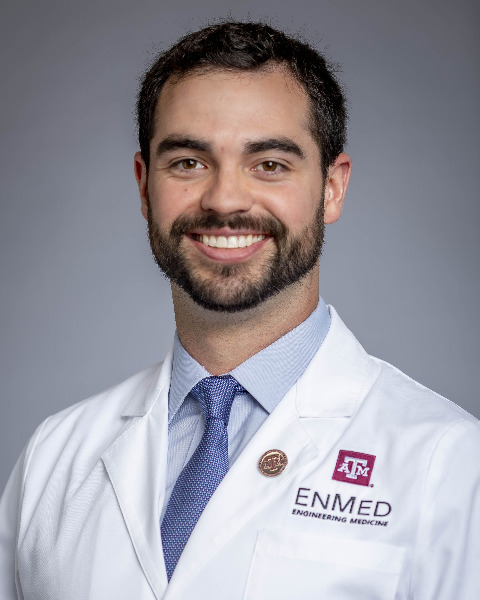Spine
Development of a Quantitative Testing Protocol for Minimizing CSF Leakage in Spinal Surgery

Cameron Keehn, B.S.M.E.
Medical Student
Texas A&M School of Engineering Medicine
Presenting Author(s)
Introduction: Surgical opening of the dura may be intentional (durotomy) or occur incidentally. Durotomy closure and healing are crucial to prevent further postoperative CSF leakage and intracranial hypotension. One study reports an incidence rate of 12.6% for decompressive and reconstructive lumbar procedures, translating to over 100,000 patients risking dural tear annually. Incidental durotomies have an average cost increase of $4000 compared to cases without. The only current options to test dural repair devices are animal models, which are costly and require initial benchtop testing before approval. Therefore, a need for new dural repair tools exists, warranting the development of a high-fidelity non-animal dural testing model.
Methods: An Arduino microcontroller was used to control a peristaltic pump via a D4184 MOSFET and move water through a 3D-printed spinal column model. Multipart molds including an inner hollow shell and outer semi-hollow shell were designed with CAD software and created using fused deposition modeling with water-soluble polyvinyl alcohol filament. 20A degassed silicone was then poured into the molds and allowed to set. Finally, longitudinal incisions were made in the mock dura, and the defect-mediated flow (or “leakage”) rate was monitored volumetrically over time and qualitatively for patterns.
Results: Twenty-five 1.1 mm thick dura silicone models were tested using the spinal cord simulation model. The baseline flow rate with no dura model attached was 82.3 mL/min (100%). The average flow rate across all twenty-five models was 73.29 mL/min (89.1%), with a standard deviation of 4.05 ml/min. Dura flow rate was reduced exponentially over time, mimicking the nature of surgical durotomies.
Conclusion : The model described in this paper functions successfully and accurately as a CSF leakage test bed and can enable accelerated neurosurgical tool development. With the initial conditions and current dura thickness, flow quality was found to mimic initial dura insult as seen in neurosurgical cases. Future work will ensure a constant pressure differential is maintained.
Methods: An Arduino microcontroller was used to control a peristaltic pump via a D4184 MOSFET and move water through a 3D-printed spinal column model. Multipart molds including an inner hollow shell and outer semi-hollow shell were designed with CAD software and created using fused deposition modeling with water-soluble polyvinyl alcohol filament. 20A degassed silicone was then poured into the molds and allowed to set. Finally, longitudinal incisions were made in the mock dura, and the defect-mediated flow (or “leakage”) rate was monitored volumetrically over time and qualitatively for patterns.
Results: Twenty-five 1.1 mm thick dura silicone models were tested using the spinal cord simulation model. The baseline flow rate with no dura model attached was 82.3 mL/min (100%). The average flow rate across all twenty-five models was 73.29 mL/min (89.1%), with a standard deviation of 4.05 ml/min. Dura flow rate was reduced exponentially over time, mimicking the nature of surgical durotomies.
Conclusion : The model described in this paper functions successfully and accurately as a CSF leakage test bed and can enable accelerated neurosurgical tool development. With the initial conditions and current dura thickness, flow quality was found to mimic initial dura insult as seen in neurosurgical cases. Future work will ensure a constant pressure differential is maintained.

.jpg)